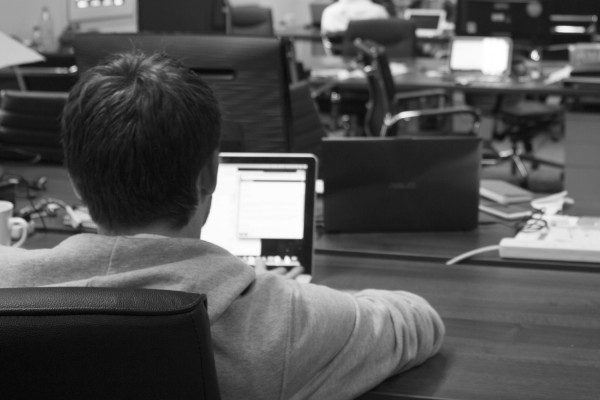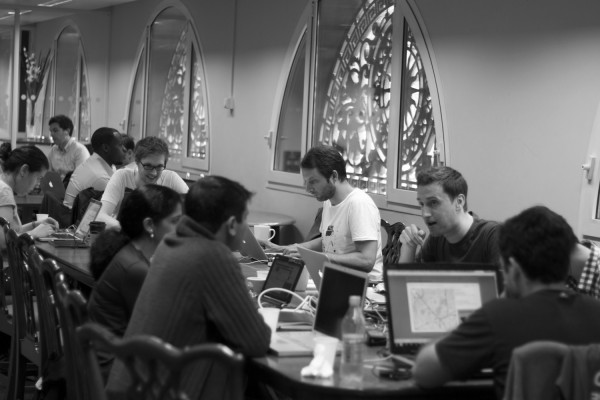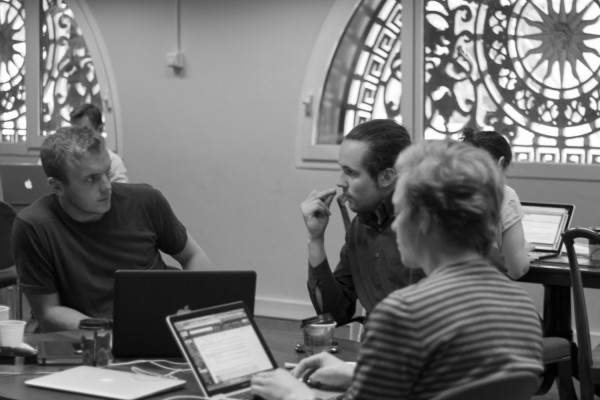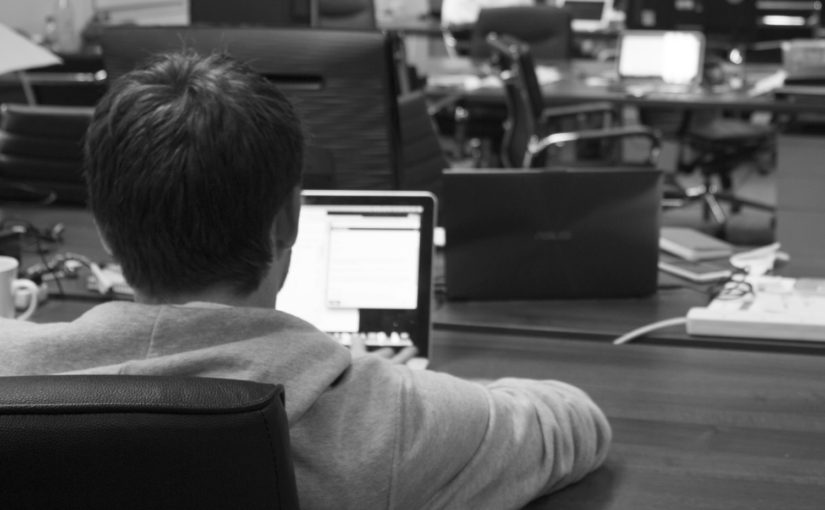Customer personas and archetypes are usually vapid and prosaic lists of generic attributes. “What car does your ideal customer drive?” is a hackneyed favourite of marketing consultants everywhere. I prefer to work with a “customer narrative” that forces me (and the client) to really think from the customer’s perspective. We can’t have meaningful empathy for an anonymous customer persona. But we can feel the pain of the lead character in a well-told customer story.

An end-user narrative is a semi-fictional story of an idealised customer. The point of the story is to create a shared understanding across the design team of the audience’s emotions, behaviours and motivations. As in any good story, the moments of tension and friction are the most interesting.
Customer narrative
Customer stories are a powerful brand strategy tool because they are so vivid and memorable. The best way for human beings to share and remember empathetic insights about another person is through stories. Personas, profiles and archetypes are still useful but a user story is much more powerful.

There are a couple of tricks that I’ve picked up over the years for building a compelling customer narrative:
- Be specific: Characters, setting and plot should be vivid and clear. You need a likeable lead character and a believable plot.
- Be emotional: The story isn’t a fact-based “Customer Experience Map” or a software developer’s “User Story”. It’s a tool for understanding a human experience and building empathy. So it needs to inspire an emotional connection.
- Don’t try and please everyone: Like a good movie, not everyone will like your customer narrative. But liking it, or agreeing with it, isn’t the point. The aim is to put the reader in the shoes of the protagonist.
The business impact of increased empathy should be more persuasive communication and better strategic decision making about positioning your product. If you understand someone better, then you can communicate more powerfully with them and deliver a better experience.
Every organisation has a latent customer narrative. Even if it’s unspoken. The art form of the strategist is to uncover it. We create customer narratives through anthropological design research, creative workshop discussions and creative writing.

In lean branding the customer narrative is a link between brand strategy, design and copywriting. This is the story of the Innovation Warehouse’s end customer archetype, as told through a customer narrative…
Scene 1 – The office
Steve is a successful, if somewhat bored, software developer working for an accounting firm in Canary Wharf.
It’s an idle Tuesday afternoon and he is daydreaming about being his own boss. To kill a little time, he’s surfing on meetup.com for startup events in London. He chances across an event at the Innovation Warehouse, where a successful entrepreneur is going to share her story of launching a software startup and building it through to an IPO. Steve has heard of the speaker previously and signs up for the talk.
On the day of the event, Steve has to leave the office earlier than usual and is feeling a little apprehensive as he makes his way to Farringdon. He’s not quite sure where the venue is on the map or exactly what goes on at these types of startup networking events.
He walks through Farringdon, undecided on whether to stop for food on the way. His phone battery is starting to run flat.
Scene 2 – Innovation Warehouse evening event
After Steve finds a seat, an Innovation Warehouse team member gets up to welcome the guests. They describe a community of aspirational and hard-working entrepreneurs that includes startups across dozens of different industries. Steve starts to realise that it might just be possible for him too to work in a place like this.
Over the next six months, Steve becomes a regular at startup events around London. He begins to get bitten by the bug. The more he sees of the entrepreneurial life, the more he is frustrated by his mundane corporate job.
Scene 3 – The office
Steve begins to bring some of his new-found startup energy back into the office. But it’s not well received. He finally gets to a point where he feels that “this is no longer the place for me”. Steve realises “I need to be around people who think like me.”
Scene 4 – Steve’s living room
Steve quits his job and reads The Lean Startup. He buys a few “make money online” ebooks and joins a couple of online communities while working from home. He soon realises that he needs to be around other people to be productive and stay focused. His next stop is a local hipster coffee shop, where we works for a week or two before he hears about a funky new shared cafe/workspace.
Scene 5 – Hip London Startup Incubator
After a few weeks of tweaking his blog and trying a few Facebook apps, Steve realises that he’s just playing at having a startup. Steve levels up and joins a hip new startup incubator (such as Google Campus in London). Juiced up on the energy in the room, he redoubles his efforts and signs up for a Code-Academy account (to learn to make iPhone apps).
Steve is starting to get some traction on one of his business ideas. And suddenly he needs a team to execute on the idea. New to-do items are arriving faster than he can tick them off. The first step is a co-founder. Steve meets a marketing co-founder at an event. The two pair up and start tossing ideas back and forth. At first, the casual co-working cafe is a great space for this stage because there’s such a positive buzz.
But the new friends that he’s made keep interrupting Steve and the ping-pong table calls to him. There are no whiteboards to use to capture ideas. There are no meeting rooms, and when a potential investor wants to visit, Steve suddenly realises that there’s nowhere to have a private conversation.
Scene 6 – Steve’s First Paying Customer
There comes a moment in every startup’s life when things get real. Steve’s first paying customer makes him realise that it’s time to get serious about growing the team and getting investment. One night, when Steve is kicked out of the cafe/incubator space at 5pm (in the middle of a customer phone call), he decides that it’s time for his business to get real.
Steve remembers his visit to the Innovation Warehouse; he remembers that while he was eating pizza at 7pm, the members in the accelerator space were still hard at work. He remembers the palpable sense of determination in the air. He digs out the old flyer that he picked up six months ago at his first startup event. The flyer reads:
Dear entrepreneur, You should join the Innovation Warehouse because:
- You can surround yourself with other committed, hardworking entrepreneurs.
- You can get investment from angel investors that you can get to know personally because they are based in the same location.
- You can expand your team in a proper working environment.
- We give you free meeting rooms and lots of whiteboards.
- We’re serious about startups and invest equity in several residents each year.
- We are uncompromising about maintaining a productive environment for you.
- We’re not playing games here; your startup is the most important thing to you, and to us.
Scene 8 – The moment of truth
Steve finds the Innovation Warehouse website and notices that he can work there for an afternoon (to check out the space). He emails the team to book a tour and get his free access code.

Steve arrives on a Tuesday to be greeted by the house cat, free coffee and a quiet workspace. He looks at an empty desk for six people and sees the future of his business. He’s home.
The customer narrative is part of the overall brand positioning project for the Innovation Warehouse. The story is used by the team to focus the copywriting and design stages on the end-user audience. You can read more on the organisation’s blog, Klaus’s blog or read the read of the rebranding case study blog posts here.
